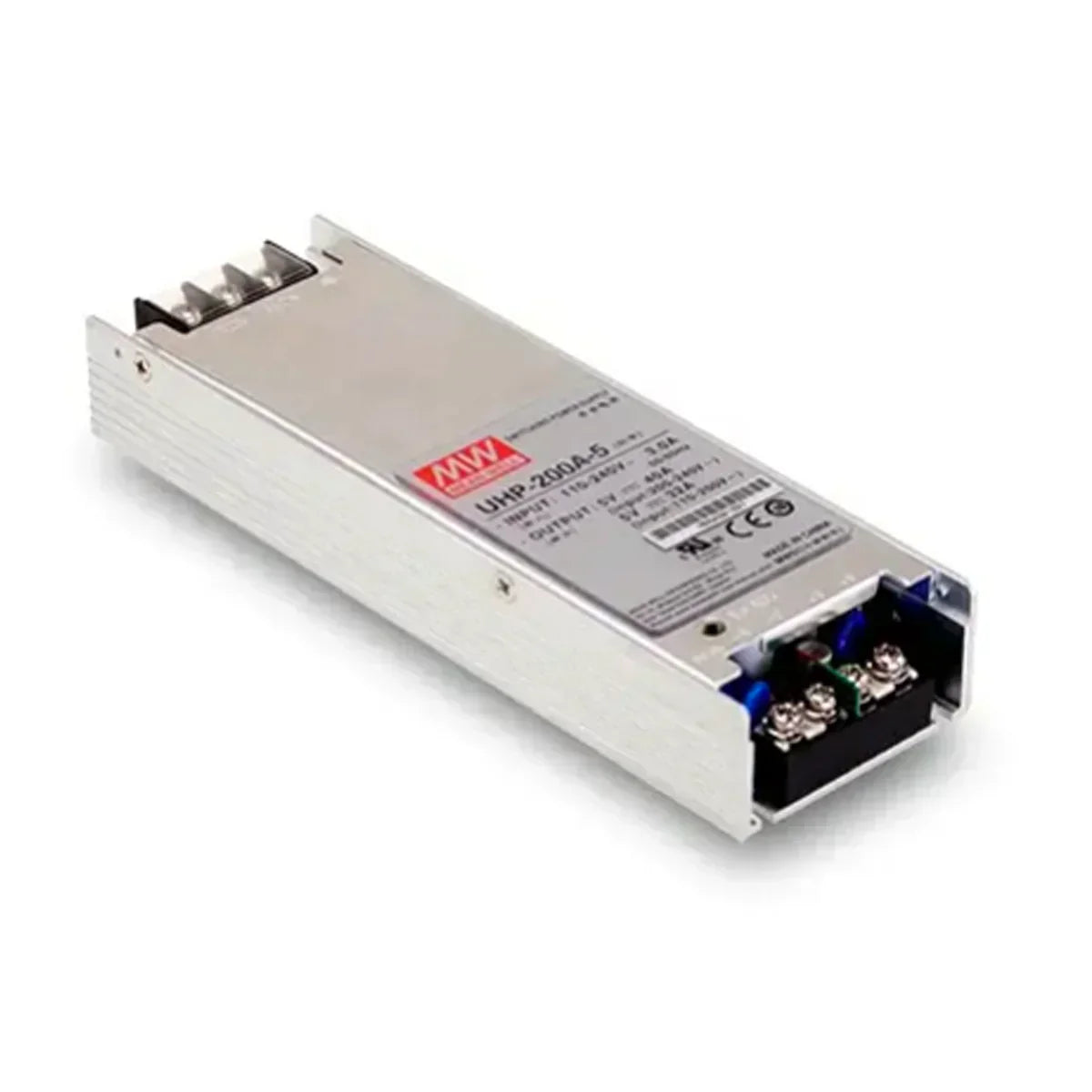In modern LED display and lighting systems, the power supply is not just a source of energy—it is the foundation that determines the performance, stability, and longevity of the entire setup. Whether you're building a large-scale LED video wall, an interactive controller-based display, or a high-density lighting module, understanding how to properly match and design interfaces between power supplies, LED modules, and control systems is essential.
This article explores how to achieve electrical compatibility, minimize voltage loss, and ensure signal reliability through effective power and interface design.
1. Matching Output Voltage, Current, and Cable Voltage Drop
Output Voltage Compatibility
Most LED modules and controllers operate at standard voltages such as 5V, 12V, or 24V. A mismatch—such as supplying 12V to a 5V module—can cause immediate damage. Always confirm the rated voltage on the LED module or driver’s specification before selection.
Current Capacity and Load Distribution
The power supply’s output current rating must exceed the total current drawn by all connected LEDs.
For example, if each LED module consumes 3A and five modules are powered in parallel, a minimum of 15A continuous output is required.
It’s best practice to include at least 20% extra headroom to ensure stable operation under load variations.
Voltage Drop Considerations
Long cable runs or undersized wire gauges lead to voltage drops, which can cause uneven brightness or flickering.
For low-voltage LED systems (especially 5V), it’s crucial to keep total drop under 3–5% of the supply voltage.
Using thicker wires (lower AWG number) or shortening cable distance can effectively minimize this issue.
2. Wiring Design: From Power Supply to Module, Controller, or Driver
Wire Gauge (AWG) Selection
Choose cable sizes based on the maximum expected current:
-
Up to 5A → 20 AWG
-
5–10A → 18 AWG
-
10–20A → 16 AWG or thicker
Using undersized wire leads to excessive heating and voltage loss.
Wire Length Limitation
When possible, keep the distance between power supply and LED module under 3 meters.
If longer runs are unavoidable, use parallel power injection or multiple distributed power supplies to ensure consistent brightness across modules.
Distribution and Grounding
Always maintain a common ground reference between the power supply and control system (receiving card or controller).
Poor grounding can introduce communication noise and cause unpredictable flicker or sync issues in LED displays.
3. Protection and Signal Coupling Interfaces
Protection Features
Choose power supplies equipped with:
-
Short-circuit protection – prevents damage when outputs are accidentally shorted.
-
Overcurrent protection (OCP) – limits output current to prevent overloads.
-
Overvoltage protection (OVP) – safeguards LED modules from voltage spikes.
-
Overtemperature protection (OTP) – ensures safe operation even in high ambient temperatures.
Control Signal Integration (PWM / DIM / DALI / DMX)
Many modern LED modules rely on control signals for dimming or synchronization, such as PWM or 0–10V dimming.
To ensure stable performance:
-
Keep power and signal lines separated to reduce EMI.
-
Use shielded cables for data or dimming signals in large installations.
-
Match the control logic level of the controller and power supply (e.g., both should support TTL or analog dimming).
Proper coupling between power and control interfaces not only protects sensitive circuits but also guarantees precise dimming and color accuracy in LED displays or ambient lighting systems.
4. Recommended Power Supplies for LED Modules and Display Systems
For professional LED display projects or module-based installations, we recommend reliable and high-performance 5V enclosed power supplies from Mean Well and LightingWill RD Series.
These models feature compact design, high efficiency, multiple protection circuits, and CE & UL certifications—ideal for both indoor and covered outdoor applications.
| Model Series | Output | Power Range | Key Features | Product Link |
|---|---|---|---|---|
| Mean Well UHP-200A-5 / UHP-350-5 | 5V | 200W–300W | Slim, high-efficiency, CE & UL certified | View Product → |
| Mean Well UHP-200A-4.5 | 4.5V | 180W | Low-voltage version for sensitive LED modules | View Product → |
| Mean Well RSP-200-5 / RSP-320-5 | 5V | 200W–300W | Moisture-resistant, ideal for display applications | View Product → |
| Mean Well LRS-200-5 / LRS-350-5 | 5V | 200W–350W | Cost-effective, compact design | View Product → |
| LightingWill RD Series (MD200PC5 / MQ300PC5) | 5V | 200W–300W | CE & UL certified, optimized for LED displays | View Product → |
Conclusion
Designing an LED system is not just about choosing bright modules or high-performance controllers—it’s about creating a perfectly matched ecosystem where the power supply, control interface, and wiring layout work in harmony.
By paying close attention to voltage/current matching, cable management, and signal protection, you can significantly improve the stability, lifespan, and visual quality of your LED module or display project.
For long-term reliability and safety, always choose certified and proven power supplies like the Mean Well and LightingWill series above—designed specifically for professional LED applications.

